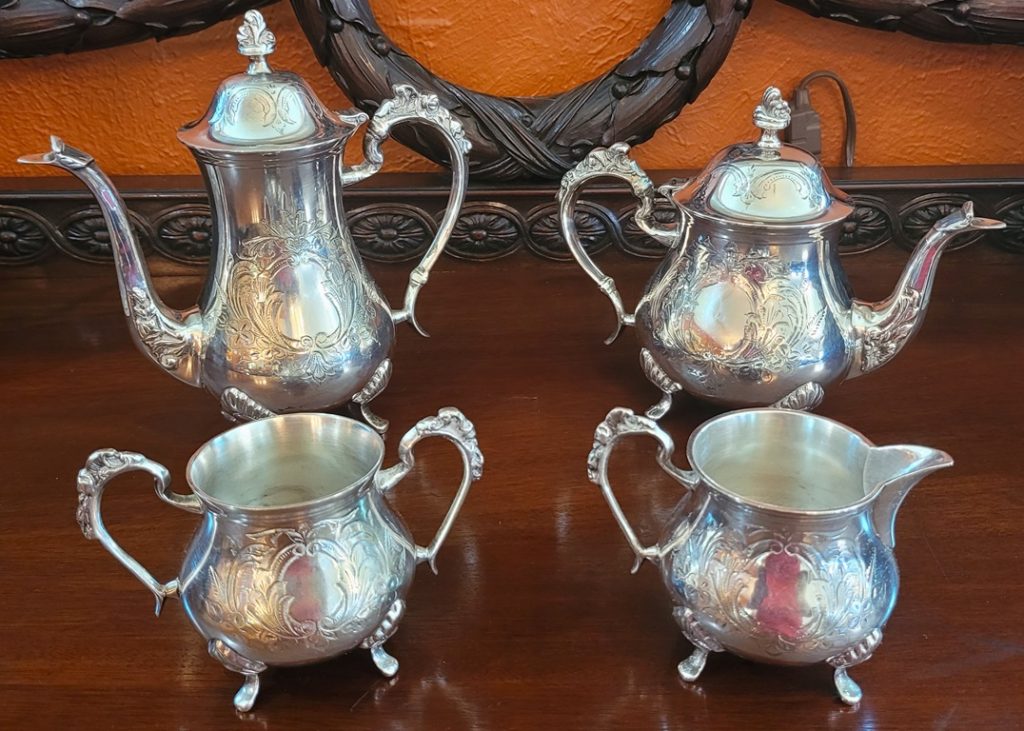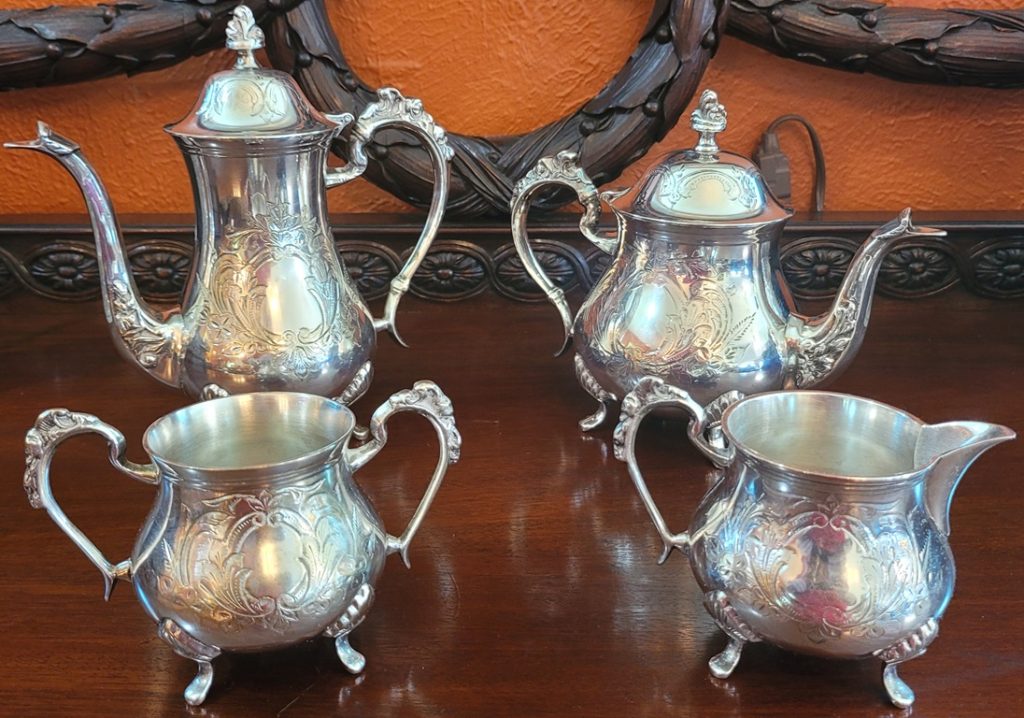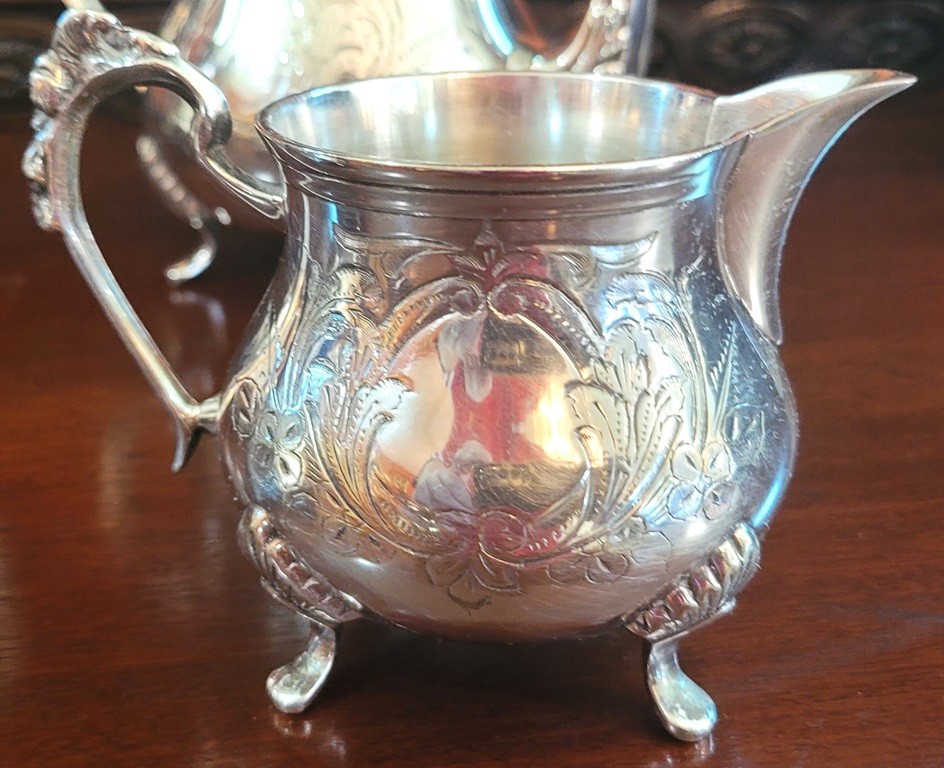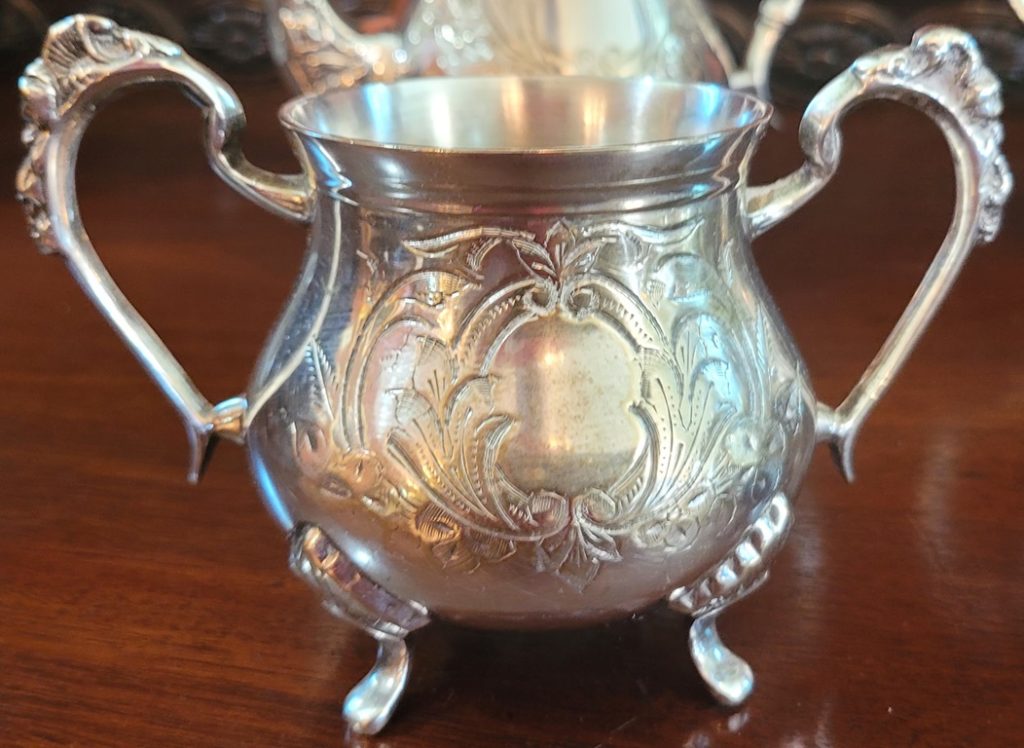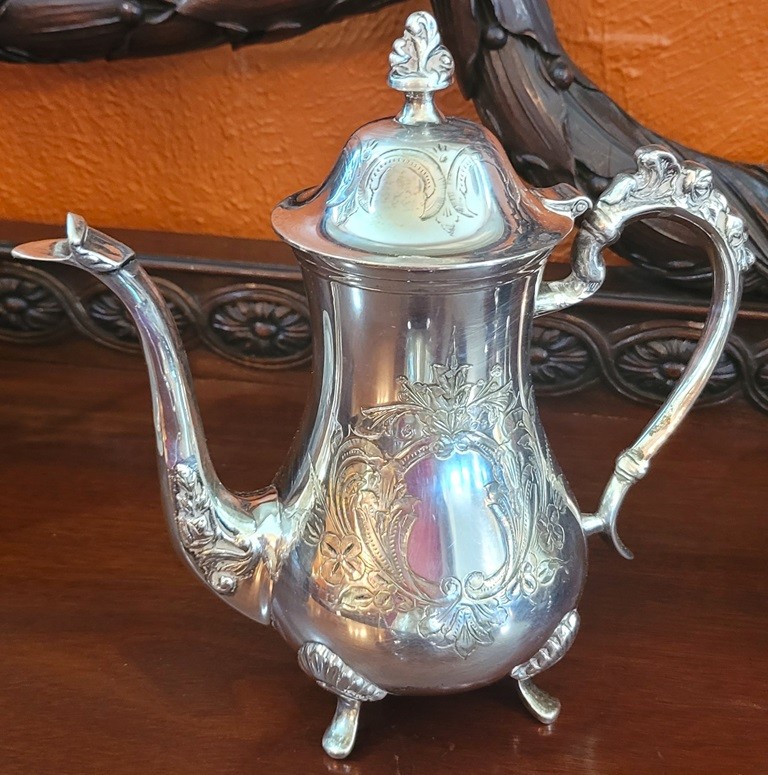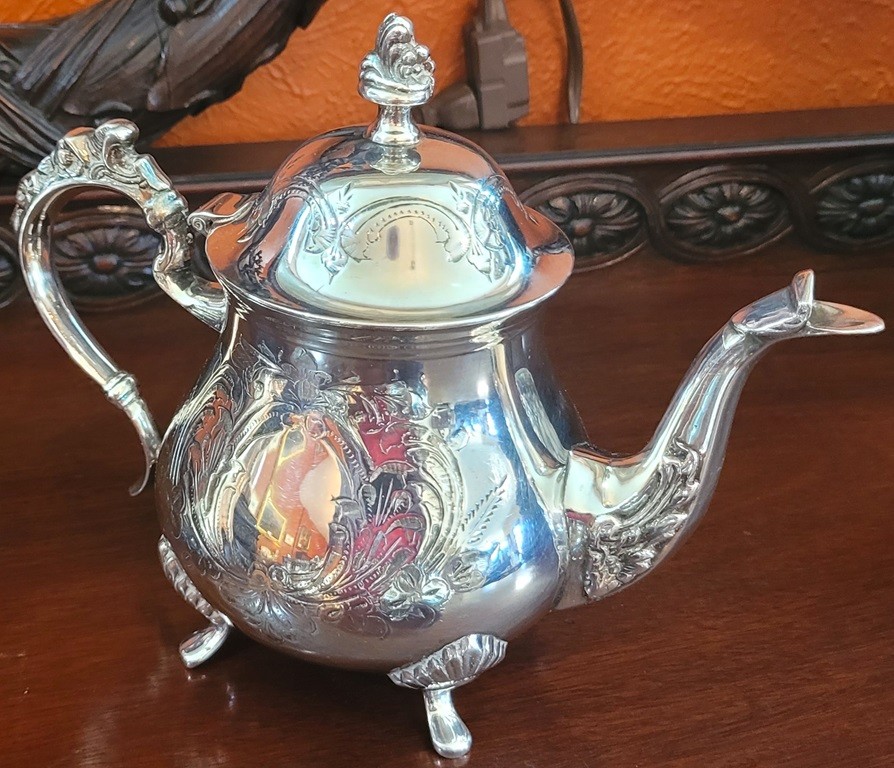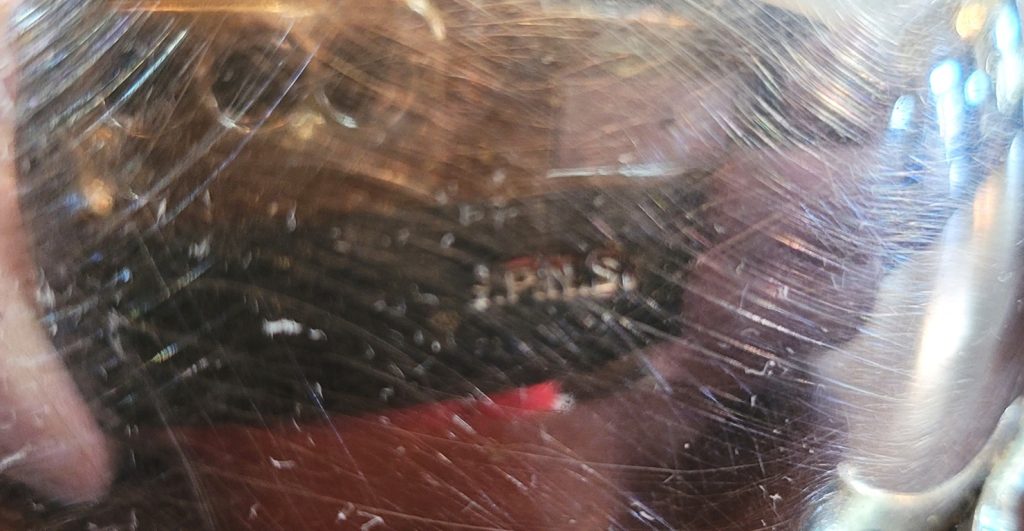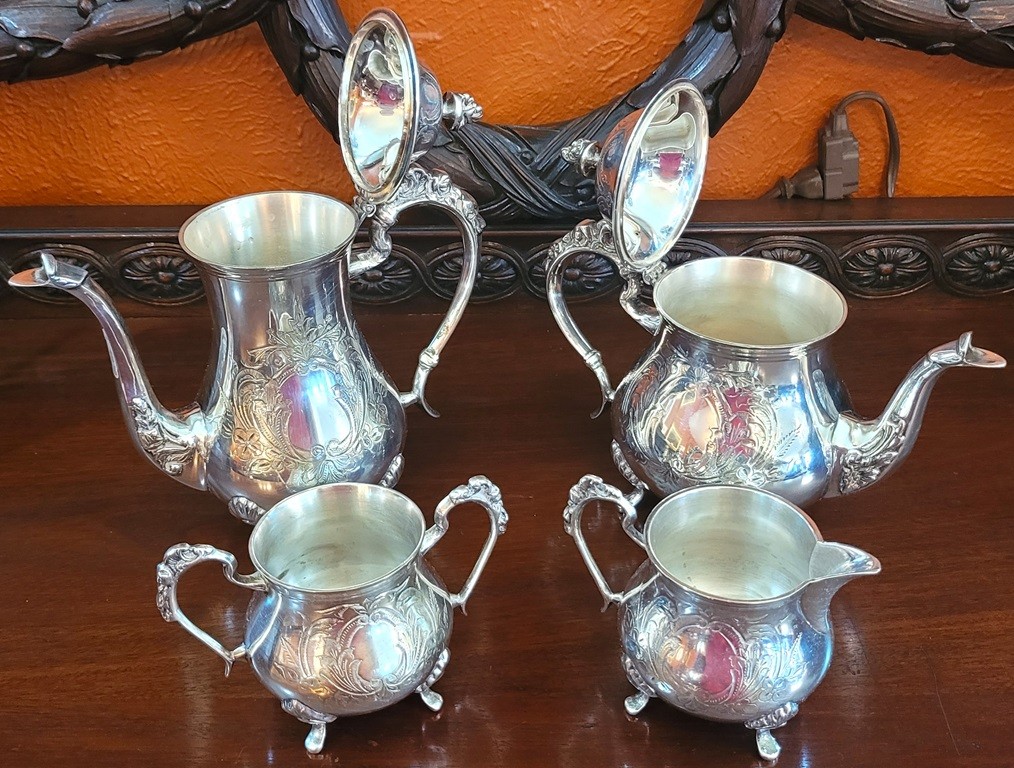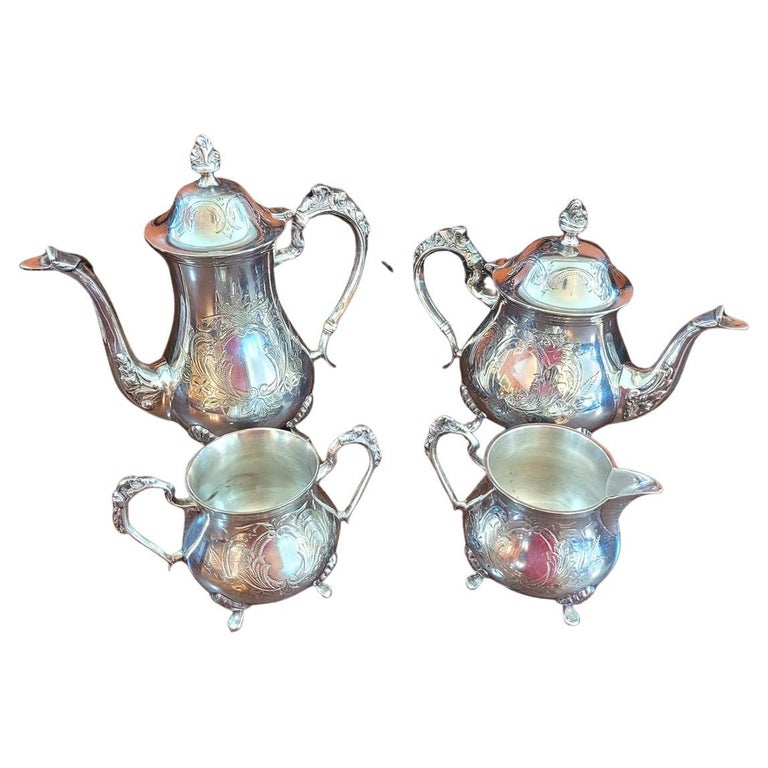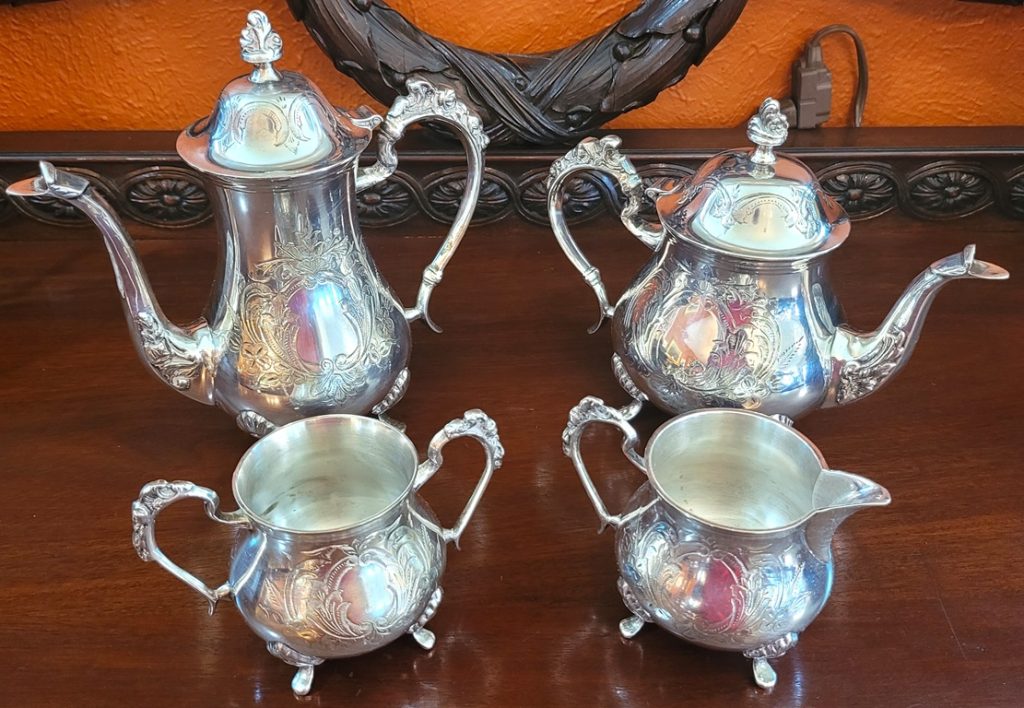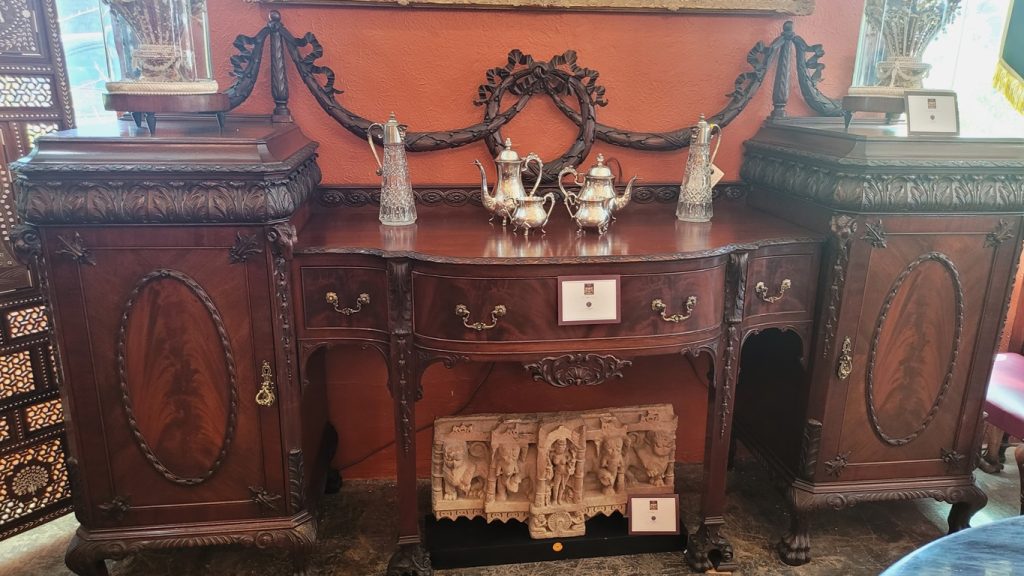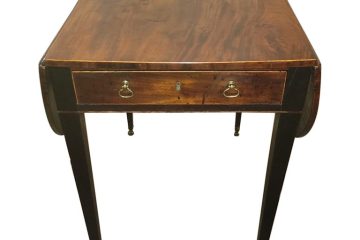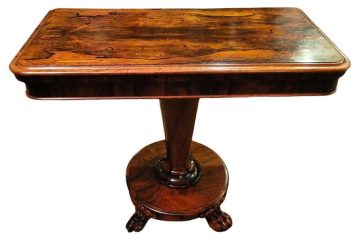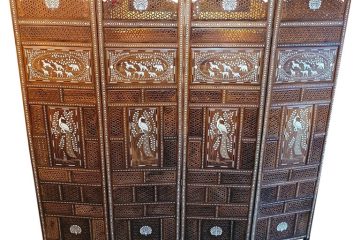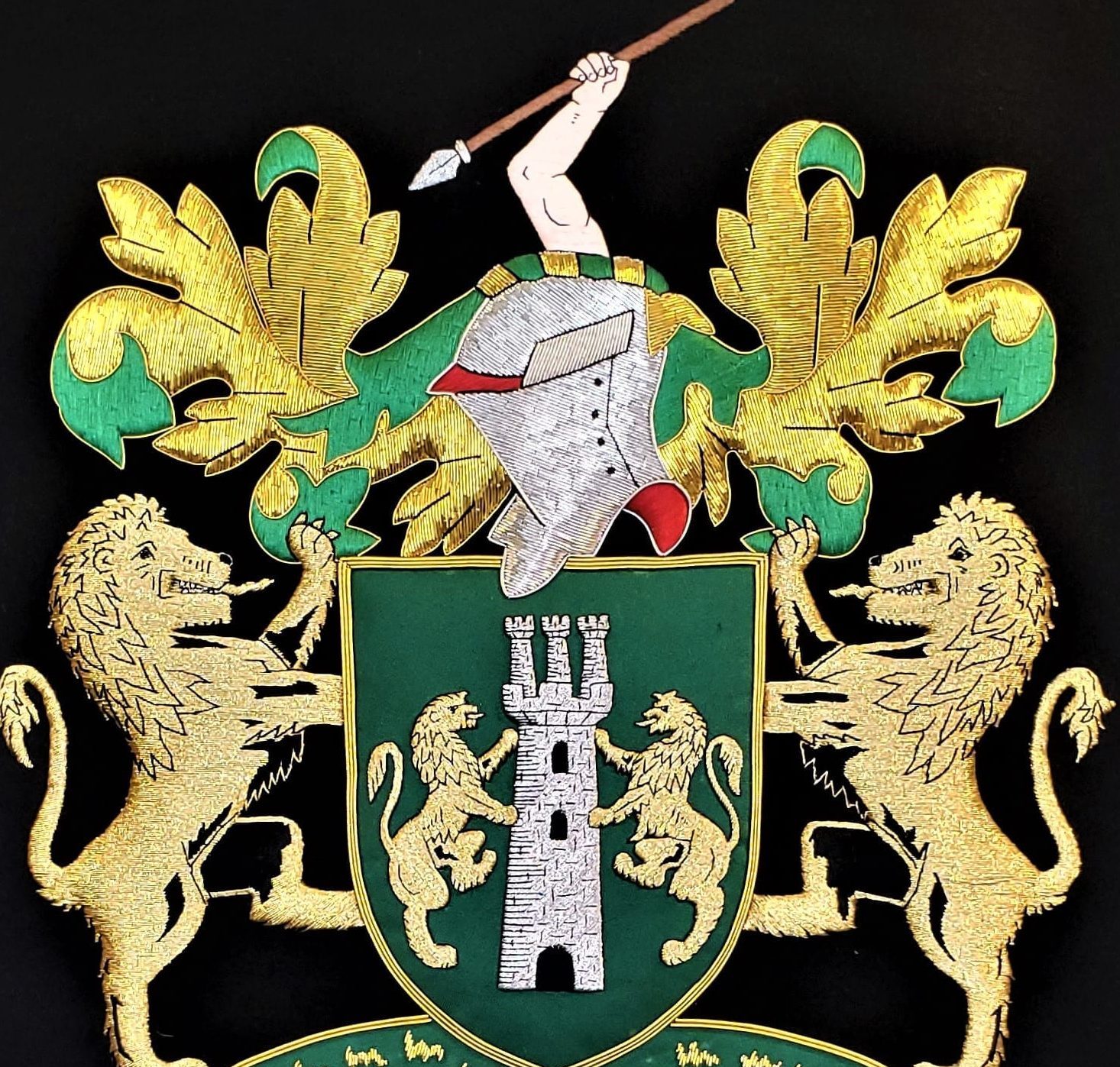PRESENTING A LOVELY 19C Old Sheffield Plate Silver Coffee and Tea Service.
Highly collectible ‘Old Sheffield plate’ ….. ALL marked ‘EPNS’ for ‘Electro Plated Nickel Silver”.
Tea Pot, Coffee Pot, Creamer and sugar bowl.
All items beautifully engraved/chased and decorated.
Floral scrolls with un-ascribed Armorial central Crest. Floral finial on lids of tea and coffee pots. Floral scrolling handles.
Fully matching service and fully and properly marked for Old Sheffield Plate.
Made in Sheffield, England circa 1880.
No makers marks, but has good quality and weight.
OLD SHEFFIELD PLATE: Sheffield plate is a layered combination of silver and copper that was used for many years to produce a wide range of household articles. These included buttons, caddy spoons, fish slices, serving utensils, candlesticks and other lighting devices, coffee and tea sets, serving dishes and trays, tankards and pitchers, and larger items such as soup tureens and hot-water urns. Almost every article made in sterling silver was also crafted by Sheffield makers, who used this manufacturing process to produce nearly identical wares at far less cost.
The material was accidentally invented by Thomas Boulsover, of Sheffield’s Cutlers Company, in 1743. While trying to repair the handle of a customer’s decorative knife, he heated it too much and the silver started to melt. When he examined the damaged handle, he noticed that the silver and copper had fused together very strongly. Experiments showed that the two metals behaved as one when he tried to reshape them, even though he could clearly see two different layers.
Boulsover set up in business, funded by Strelley Pegge of Beauchief, and carried out further experiments in which he put a thin sheet of silver on a thick ingot of copper and heated the two together to fuse them. When the composite block was hammered or rolled to make it thinner, the two metals were reduced in thickness at similar rates. Using this method, Boulsover was able to make sheets of metal which had a thin layer of silver on the top surface and a thick layer of copper underneath. When this new material was used to make buttons, they looked and behaved like silver buttons but were a fraction of the cost.
Double sandwich form
The “double sandwich” form of Sheffield plate was developed around 1770. Used for pieces such as bowls and mugs that had a visible interior, it consisted of a sheet of silver each side of a piece of copper; early manufacturers applied a film of solder over the bare edge of copper although such pieces are very rare. Edges of early salvers were hidden by folding them over but from about 1790, borders were applied with U-shaped lengths of silver wire to conceal the copper which can often be felt as a lip on the underside. Towards the end of the period, solid wire was sometimes used which can be hard to see.
Nickel silver
Following the invention of German silver (60% copper, 20% nickel and 20% zinc), around 1820, it was found that this new material also fused well with sheet silver and provided a suitable base metal for the Sheffield process. Because of its nearly silver color, German silver also revealed less wear, or “bleeding”, when Sheffield-made articles were subject to daily use and polishing. Being much harder than copper, it was used from the mid-1830s but only for articles such as trays or cylindrical items that didn’t require complex shaping.
Link: https://en.wikipedia.org/wiki/Sheffield_plate
19C Old Sheffield Plate Silver Coffee and Tea Service.
Provenance: Bought at an Estate Sale in Ireland.
Dimensions: Coffee Pot: 9 in Tall, 9 in Wide and 4.5 in Deep
Tea Pot: 7.5 in Tall, 8.75 in Wide and 5 in Deep
Creamer: 4 in Tall, 5 in Wide and 3.5 in Deep
Sugar Bowl: 4 in Tall, 6 in Wide and 3.5 in Deep
Condition: Very Good. Some very minor loss of silver plating in places through age, use and polishing but not significant.
SALE PRICE NOW: $680 (Set of 4)
